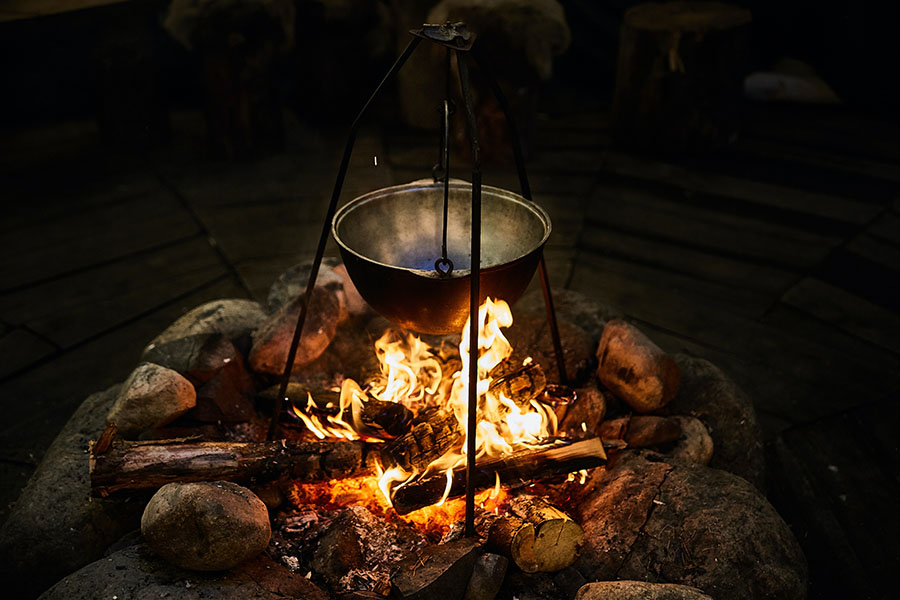‘Double, double, toil and trouble,
Fire burn and cauldron bubble.’
–William Shakespeare
After my grandmother died, my mother found a small notebook in which Arbie had written down all my cute ‘sayings’ when I was a child first learning how to talk. The first sentence it recorded was; “I want to be a Witch someday. Not Tuesday.”
As I was then a twenty-eight year old Witch whose coven meetings were held on Tuesdays, I burst into laughter. I read through the little notebook and saw—to my amazement—that every other sentence was about Witches. How does a child between the ages of one and three, growing up in a scientific, agnostic household, with no television, develop such a fascination?
My mother had the answer.
“You see,” she said after I finished perusing the notebook, “You were always like this. Witches, magic, what the birds were saying out in the garden. This is all you ever wanted to talk about. We never encouraged you in the slightest.”
I patted her arm comfortingly. “It’s true, Mom. You never encouraged me.”
“The only explanation is reincarnation!” she asserted. “You were always like this, from the very first.”
I nodded sympathetically. “It’s not your fault.”
Do people choose a path, or does it choose them?
As an adult, one of the things I like about Wicca, or Witchcraft, as it is colloquially called, is that it is experiential rather than dogmatic, soulful as well as spiritual. My spiritual explorations are in no way limited to what is defined as ‘Wicca’, or even Paganism. Because Paganism includes many deities and practices, there is no sense of it having exclusive rights to ‘the truth’. All roads lead to the sacred.
I have been a Priestess teaching shamanic classes since 1976. I have been teaching year-long Wiccan Apprenticeship programs—which I now like to call ‘Hogwarts for Grown-ups’– since 1992.
Initially, people often enter Wicca, colloquially known as Witchcraft, the path of the Wise, seeking control. Not usually the control of others, but wanting to control their own lives, their outcomes.
Magic has sometimes been called ‘the art of coincidence control’.
But somewhere along the line, most of those who come hankering for power find their concept of power has widened and deepened to a flow far vaster than anything their egos could possibly generate or fathom.
They exchange the illusion of mastery for mystery.
Or as I often joke in my Apprenticeship program; “They came for the magic. They stayed for the food.”
By which I refer not just to the luscious potluck feasts we provide for each other, but to the feast of love, nourishment, the amazing blending of consciousness, the putting aside of ego and sharing of heart which occurs, miraculously, year after year.
Some of the most sacred and remarkable revelations of my life have occurred while I was engaged in ritual. Most of them have occurred when I was engaged in living my ordinary, amazing life.
Transformation is both magical and miraculous and utterly ordinary and mundane.
Since Shakespeare wrote the lines, “Bubble, bubble, toil and trouble,” in his play ‘Macbeth’, our culture has shied away from the image of Witches cackling over a seething cauldron as an icon of unspeakable evil and horror.
But a cauldron is only a big soup pot, something every family in old Europe cherished since the beginning of the Bronze Age. Often it was their most valuable possession. Because of it, whatever they gathered or raised could be thrown together with a little or a lot of water depending on the season and the abundance of available food, and a nourishing soup or stew would emerge.
The cauldron has been a symbol for magic because it is an earthy metaphor for transformation—throw a bunch of disparate elements together and it somehow becomes more than the sum of its parts.
When used for medicine, the cauldron could combine herbs into a potent, healing tea or salve.
Hence the cauldron became known as a magical implement, the cauldron of changes. But its powers were for good, not harm. There were many cauldrons in Celtic mythology. The cauldron of Undry, belonging to the God Dagda, which miraculously churned out so much food and drink that no company every left it hungry. The Cauldron of Cerridwen which holds the inspiration from which all artists and poets must drink to be inspired, the cauldron which also carries the promise of transformation which transcends death; the power of reincarnation, the mystery of rebirth.
The Goddess Cerridwen changed my name and claimed me as her own over thirty years ago when I first stepped on the Wiccan path. She is the Goddess of transformation and creativity, and also the mother of Taliesin, the greatest storyteller in Celtic mythology. Stories simmer in our minds, often for years. They can be nourishing and delicious as soup; they can be as potent as medicine. The Witch is one who stands outside of the culture, in a little house in the woods, with her herbs, her observations, her stories and her wisdom. She brews soups and spells, potions and cures. These are some of the teaching and healing stories that have emerged from my journey. They are serious and silly, simple and profound, and they are all true. So scoot your seats a little closer, hold out your bowls. I’ve been brewing this hotchpotch for 55 years and it’s ready now.
Have a little broth from the cauldron.
